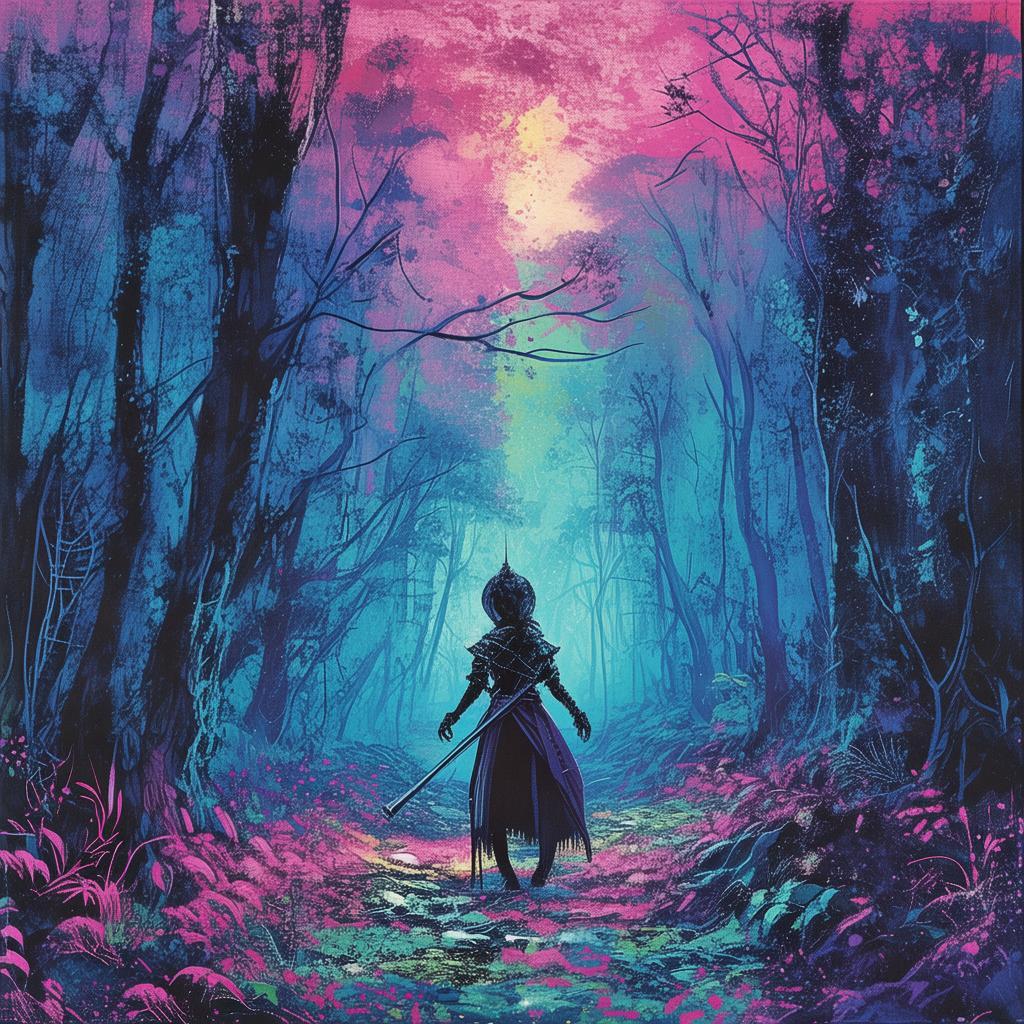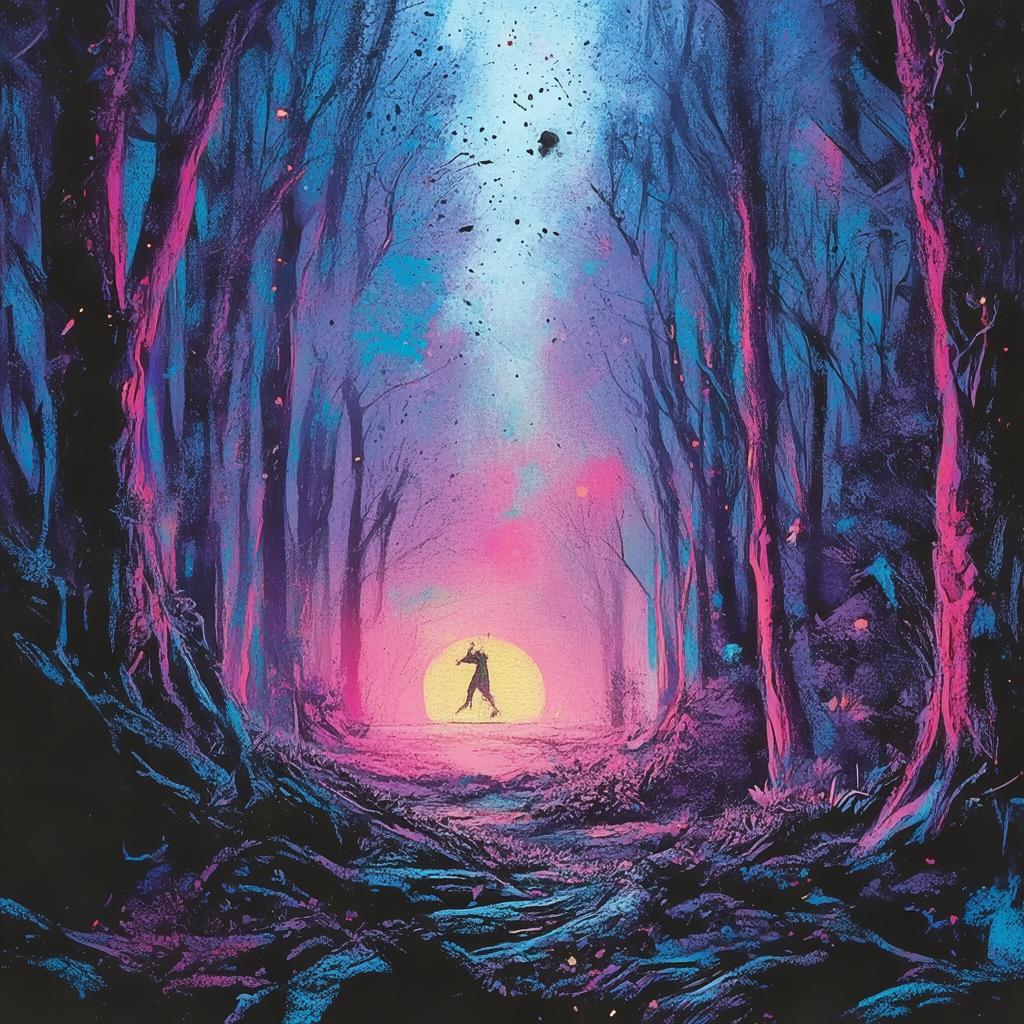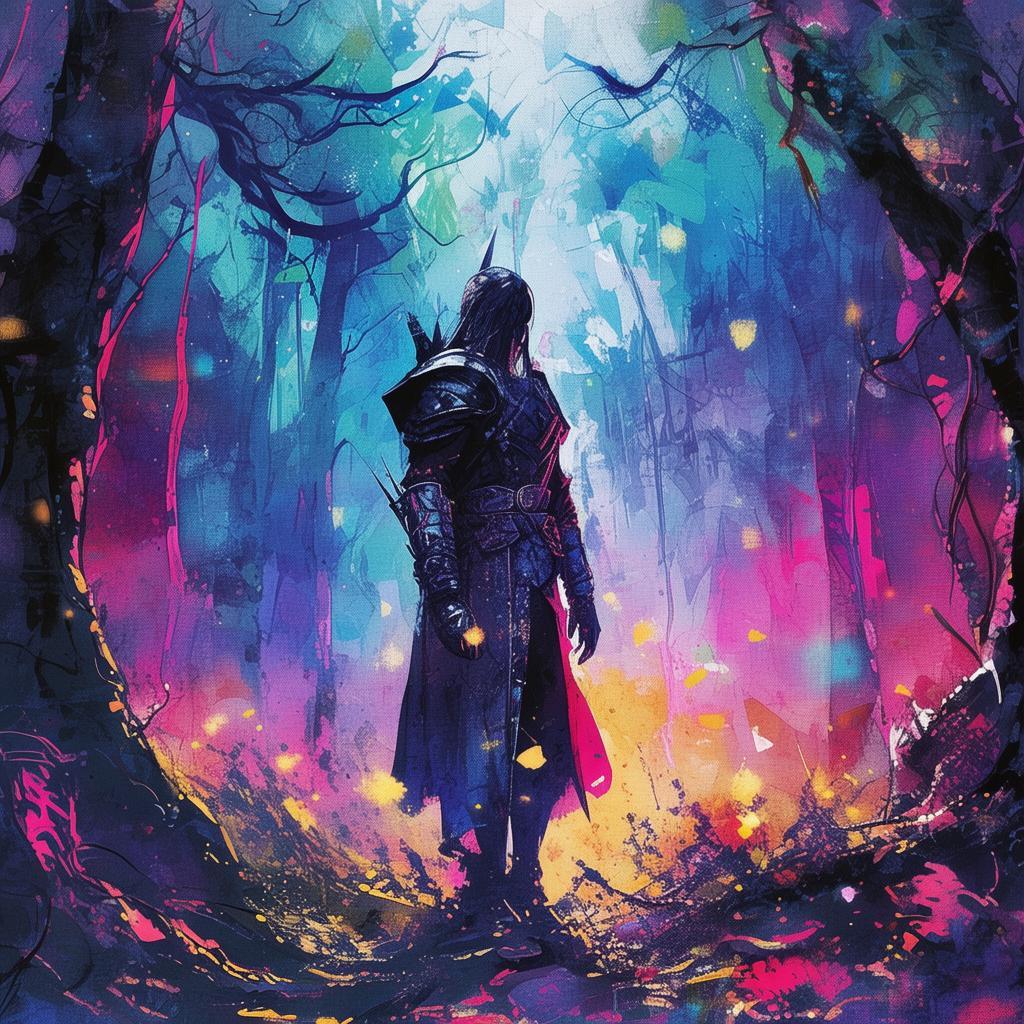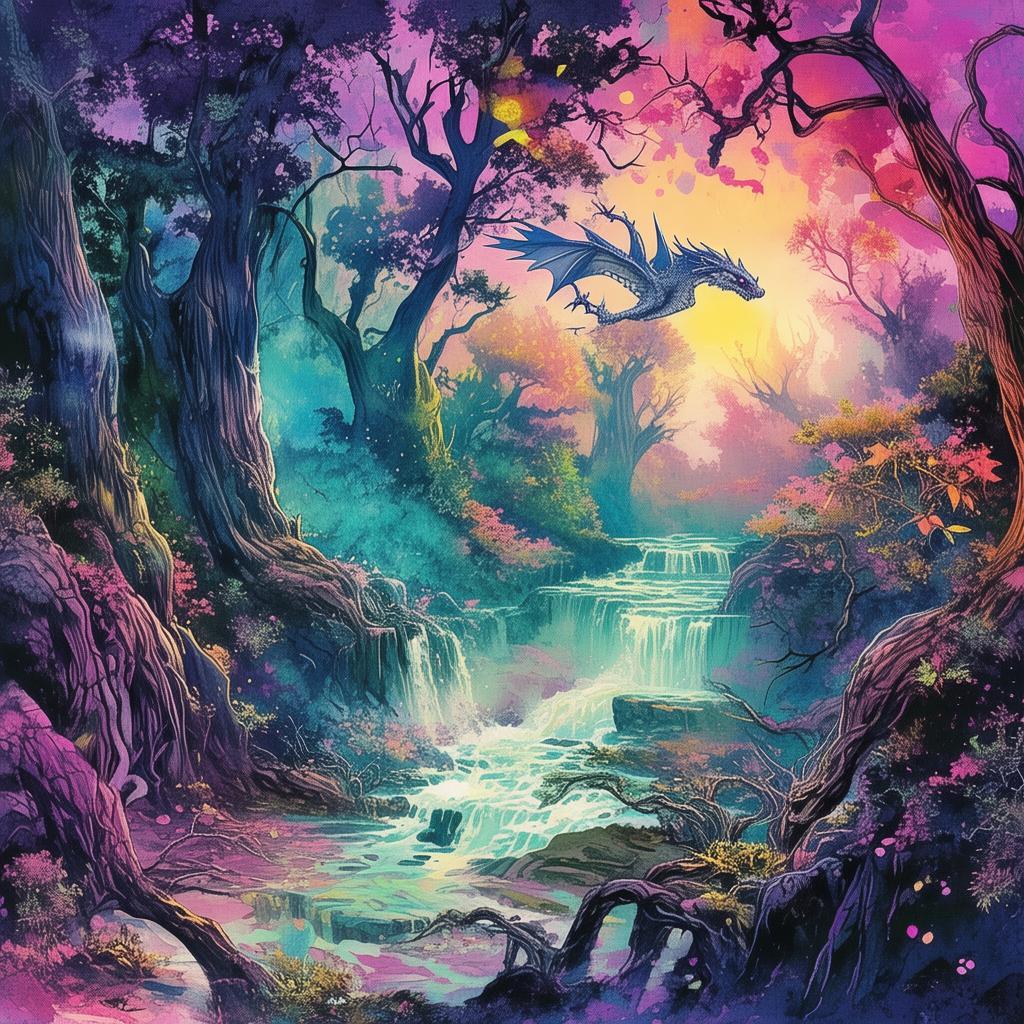The Celestial Weaver's Redemption
The bustling streets of Seoul were a mosaic of the old and the new, where the echoes of history seemed to whisper through the modernity. Among the skyscrapers and neon lights stood a quaint little art gallery, known for its unique exhibits and the enigmatic aura that seemed to envelop every corner. It was here that young artist Hye-jin found herself, her heart pounding with anticipation as she gazed upon a peculiar painting.
The painting depicted a celestial figure, a weaver of stars, her hands deftly weaving a tapestry of the cosmos. It was a mesmerizing sight, but what caught Hye-jin's attention was the intricate pattern that seemed to dance and shift before her eyes. She felt an inexplicable connection to the figure, as if she had seen this pattern before, in a dream or a forgotten memory.
Intrigued, Hye-jin began to research the painting, and soon discovered that it was inspired by an ancient Korean myth, the tale of the Celestial Weaver. According to the legend, the Celestial Weaver was a deity who wove the fate of humanity with threads of starlight. She was both a bringer of joy and a weaver of sorrow, her loom a testament to the delicate balance of life.
As Hye-jin delved deeper into the myth, she found herself drawn to the story of the Celestial Weaver's last act of love. Long ago, the weaver fell in love with a mortal, a young man named Dae-ho, who was destined to die young. Despite the celestial laws that forbade such unions, the weaver chose love over duty and wove a thread of immortality for Dae-ho, but at the cost of her own eternal life.
Hye-jin's fascination with the myth grew, and she began to incorporate elements of the Celestial Weaver into her own art. Her paintings started to reflect the celestial patterns, and she found herself drawing inspiration from the weaver's story. However, as her art gained attention, so did the whispers of a strange phenomenon. People began to see the patterns in her paintings as omens, predicting events that would soon unfold in their lives.
One day, Hye-jin received a mysterious letter. It was from an old woman who claimed to be the descendant of the Celestial Weaver. The woman revealed that the patterns in Hye-jin's paintings were indeed magical, and that she had been chosen by the celestial weaver to carry on her legacy. But there was a catch; Hye-jin had to prove her worth by facing a great trial.
The trial was a series of tests that would challenge Hye-jin's heart and soul. She had to choose between the man she loved and the myth that had consumed her life. The man, a successful architect named Young-min, had become her confidant and closest friend, but their relationship was fraught with tension. Young-min was suspicious of Hye-jin's sudden obsession with the Celestial Weaver, and their love was tested by the very myth that had brought them together.
As Hye-jin grappled with her choices, she realized that the Celestial Weaver's story was more than just a myth; it was a mirror reflecting her own life. She had been torn between her love for Young-min and her passion for her art, and now she had to make a decision that would not only affect her future but also the fate of those around her.
The trial reached its climax when Hye-jin was confronted with the very tapestry of her life, woven by the celestial hands of the myth. She saw the threads of love, betrayal, and destiny that had brought her to this moment. With a heavy heart, she reached out to untangle the threads, but as she did, she realized that the tapestry was a reflection of her own soul.
In that moment of clarity, Hye-jin understood that the Celestial Weaver's story was not just about love and sacrifice, but about the human capacity for redemption. She saw that her own life was a tapestry of choices, and that she had the power to weave her own destiny.

With a newfound sense of purpose, Hye-jin chose to embrace both her art and her love, understanding that they were not mutually exclusive. She forgave Young-min for his skepticism and embraced the challenge of weaving her own path in the modern world.
The old woman, the descendant of the Celestial Weaver, watched with pride as Hye-jin stepped forward, her heart and her art aligned. She knew that the weaver's legacy had been passed on, not through a celestial being, but through a human spirit that had found the strength to weave a tapestry of hope and love in a world that needed it most.
And so, Hye-jin's paintings continued to inspire, her story of love, betrayal, and redemption becoming a modern myth, a testament to the enduring power of the human spirit and the celestial threads that weave through our lives.
✨ Original Statement ✨
All articles published on this website (including but not limited to text, images, videos, and other content) are original or authorized for reposting and are protected by relevant laws. Without the explicit written permission of this website, no individual or organization may copy, modify, repost, or use the content for commercial purposes.
If you need to quote or cooperate, please contact this site for authorization. We reserve the right to pursue legal responsibility for any unauthorized use.
Hereby declared.









